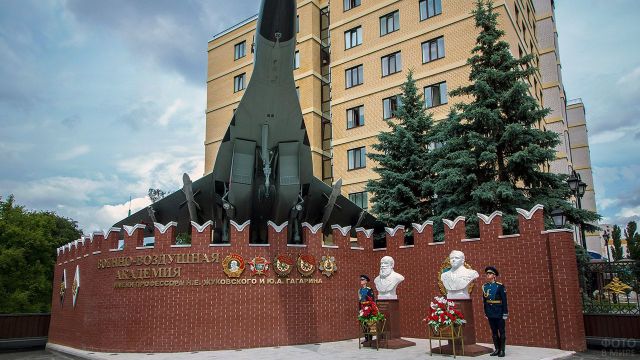She takes into account in her work the intensity of the modulated radiation of searchlights, the Federal Institute of Industrial Property reportedMOSCOW, October 20.
/tass/. Military Educational and Scientific Center (VUNC) The Air Force "Zhukovsky and Gagarin Air Force Academy" has patented a visual system for landing aircraft on unequipped airfields in difficult weather conditions and at night. This follows from the patent for the invention distributed by the Federal Institute of Industrial Property (available to TASS).
As noted in the document, in emergency situations, the pilot may need to land at alternate airfields that are not equipped with radio and optical landing systems. However, in difficult weather conditions, when landmarks and the runway are poorly visible, visual landing becomes problematic, even if the navigation system brought the pilot to the airfield, and thanks to altimeters, he knows the altitude at which the aircraft is located. The difficulty of visual landing lies in the fact that the pilot does not know at what point he should see the ground, and how much time he has left to make a decision on whether to land or go for a second round, the developers of the system note. At the same time, to build a landing glide path, it is necessary to have modulated optical beacons at the airfield that would work in the absence of runway visibility, as well as operational information about the distance to it and the meteorological visibility range.
"The visual landing system contains a radiating unit (IB), including two searchlights emitting light pulses in batches with a certain frequency, for example 3 Hz, located at a distance from each other at the edges of the runway perpendicular to its axis. The searchlight includes visible light sources located in the focal plane of the lens (mirror), which creates a collimated beam of light," the description of the part of the system located at the airfield says. At the same time, the beams of light emitted by the searchlights are directed at a certain angle to the horizon and determine the glide path of the aircraft descent.
The receiving unit is on board the aircraft. It is stabilized at the same angle to the horizon as the beam of light from the radiating unit. The unit includes a guidance channel and a measuring channel, which are aligned along the optical axis. "The guidance channel is made in the form of a wide-angle lens focusing the collimated radiation of spotlights in the form of two points on the matrix of a digital camera located in the focal plane of the camera lens," the patent states.
A crosshair sight is applied to the camera screen - the pilot must ensure that they are placed on the horizontal line of the sight. In this case, the aircraft withstands a glide path of pitch reduction. At the same time, the two dots on the screen corresponding to the images of the searchlights should be placed symmetrically relative to the vertical line of the sight. In this case, the pilot maintains a glide path of landing in azimuth relative to the runway axis.
It is noted that the system takes into account the intensity of the modulated radiation of searchlights in its work, signal modulation is necessary to exclude false detection of extraneous lights in difficult weather conditions. At a distance of about 5 km to the airfield, a signal is given to turn on the landing spotlights, after which the receiving unit scans the landing area at the landing and azimuth angles relative to the runway axis, and after the symmetrical arrangement of the images of the two spotlights relative to the sight, the aircraft begins to descend along the glide path. At this time, the receiver signal intensity weakened by the atmosphere and the distance to the runway are measured, the inclined meteorological visibility range is calculated. If it is equal to the distance to the runway, the pilot must see the runway of the airfield and can make a visual landing, otherwise he must go to the second circle, the patent notes.

